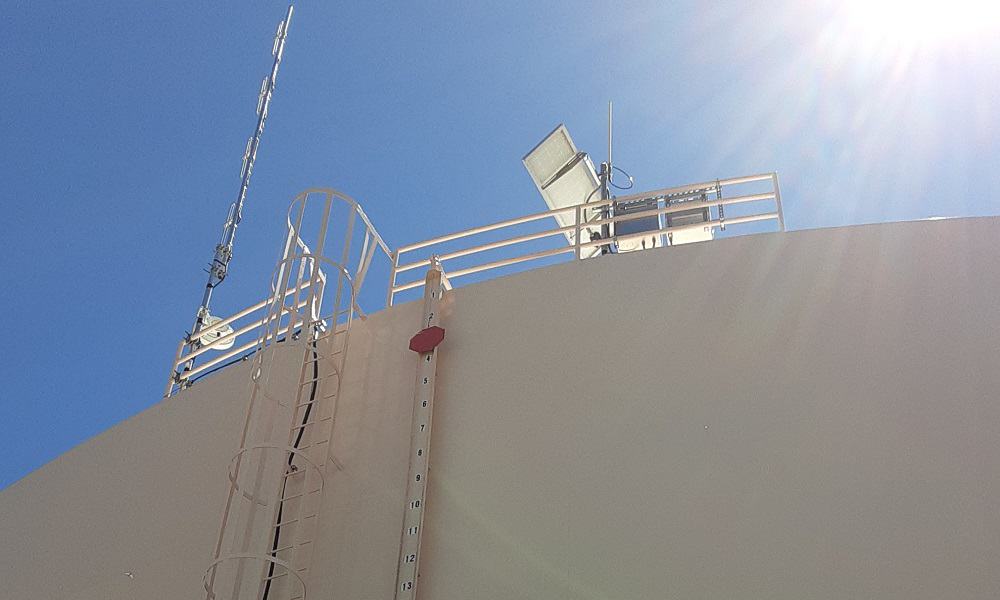Arnie Casteneda, water and wastewater director, in a report to Truth or Consequences city commissioners at their June 14 meeting, said he had been dealing with well 6 being offline for several months when a problem at the city’s Cook Street water station compounded the problem.
The city has eight wells, according to online documents available at the New Mexico Environment Department’s website. They are all located in a well field at the south end of Truth or Consequences, although an engineer with Wilson and Company, one of the city’s on-call engineering firms, reported about three months ago that the city has six wells. Casteneda, in a recent interview with the Citizen also said, “The city does not have eight wells.” He did not state how many wells are online at the June 14 meeting.
The Cook Street water station is the origin, the center, from which point water is pumped to all parts of town. It is where all the water is first chlorinated before being pumped onward.
About five weeks ago the “Cook Street main booster pump lost connection between Cook and Morgan tank,” Casteneda said, “The perfect storm,” which, in combination with well 6 being offline, resulted in two 3-million-gallon water tanks emptying, leading to low water pressure.
“That got me very nervous,” Casteneda said.
He was nervous enough to stop the work of “several contractors’’ doing road projects in town because they increased “line breaks and are losing a lot of water.” He wanted to keep as much water as he could “for our customers.” Casteneda didn’t say how long work was suspended and if it has resumed, but work on the roundabouts, exit 75 and the downtown water project appeared to be going forth on June 15.
The city’s parks also stopped watering, City Commissioner Shelly Harrelson noted, and “look yellow.”
Well 6 has been off line since late January, Casteneda said. It went back online June 13. The Cook Street and Morgan tank connection is still unresolved. Casteneda said he recently hired a “company in Albuquerque” to do the work. He estimates “it will be a few days” before the water tanks are filled enough to increase water pressure.
Casteneda said he discovered well 6, “one of the city’s best producing wells,” had a pump that was “probably leaking oil and might give out at any moment.” He informed then-City Manager Bruce Swingle and after searching for companies that could do the work only found one available, the local company, Mauldin Drilling.
After “pulling the pump,” Casteneda decided to replace the surface pump instead of repairing it with “a submersible pump.” It was installed “but fell.” After it was retrieved and installed again, it “burnt out” when it started pumping. It is being investigated whether an “electrical problem” or a defect in the pump caused the burn out, which will in turn determine if the warranty will pay for the first pump. A second pump was purchased and installed. The well was chlorinated and flushed an unspecified number of times “until we got a clean sample,” Casteneda said.
Casteneda did not mention during his report that the city had extensive work done on the well 6 pump
about two years ago, according to the city’s request-for-proposals documents on the purchasing department’s web page. Swingle reported during a city commission meeting about two years ago that he had to make an emergency expenditure—requiring New Mexico Department of Finance and Administration approval—to fix one of the wells, since the city was down to two wells and the hospital and local schools were in danger of being deprived of water.
Casteneda said “several wells are no good, especially well 8. Five years ago it stopped.” He is ordering a pump for well 8 to “get it back online,” characterizing it as “our insurance policy.”
Activist Ron Fenn visited the city’s four water tanks on June 11 and took pictures of their gauges. His photos showed that the 3-million-gallon water tank on Broad Street and the 3-million-gallon water tank on Cemetery Road were “essentially empty,” indicated by the gauges’ red metal flags at the top of the tanks. The second water tank on Cemetery Road, next to the first one, holds 1.5-million gallons. It was “full,” Fenn’s picture confirmed. At the Cook Street water station is a 1-million-gallon water tank that is the point of chlorination. It is “ungauged,” Fenn said, so it could not be determined how much water it contained.
During Mayor Pro Tem Rolf Hechler’s questioning, Casteneda revealed he has hired Smithco, a local engineering firm, to work on water leaks—the system is leaking 43 percent of what is pumped, according to Swingle in a January report—since he only has five employees, none with certification. Casteneda did not state how many more employees would make a full complement. Hechler suggested more aggressive recruitment and higher pay are needed, which would be less expensive than contracting Smithco. Casteneda said he is currently offering less than $15 an hour to applicants.


I was told by an employee at the Water Department that construction on Date was responsible for a broken main.
There is also been substantial work around town as we have all noticed repairing and replacing water pipes so I’m wondering if the percentage of water loss (43%) that you are using needs to be updated to reflect repairs in the last 4 months or so.
I would be happy to update the 43 percent water-loss figure, but since no new engineering report has emerged and no verbal report by any staff has been given, it is the only figure I have in which to add context to Casteneda’s characterization of a “perfect storm” in which a shut down well and the Cook St. problem are added to an already leaky system. When Swingle gave the 43 percent figure, he said it would get worse with the construction (because it causes leaks up the line and around the construction area–heavy equipment, vibrations) and with warm weather (because more water is pumped and used).